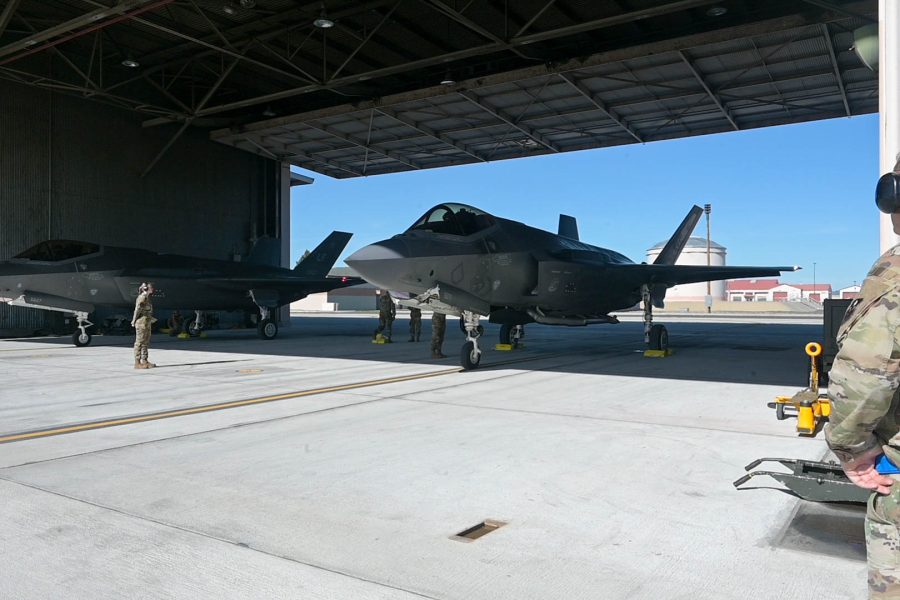A handheld flashlight left inside an engine inlet of an F-35 fighter was sucked into the engine during a maintenance ground run at Luke Air Force Base, Ariz., in March 2023, causing nearly $4 million worth of damage, according to a new accident investigation report.
The investigation, released Jan. 18, faulted the maintainer for failing to follow Air Force and joint directives as the leading cause of the mishap, which damaged the $14 million engine badly enough that it could not be repaired locally.
However, investigators also cited problems with the F-35’s Autonomic Logistics Information System as a substantially contributing factor. ALIS is intended to integrate operations, maintenance, prognostics, supply chain, customer support services, training and technical data, but the system has struggled with a lack of real-time connectivity, clumsy interfaces, and more.
As a result, the report stated, “the substantial number of checklists and difficulty in accessing the correct ones causes complacency when users reference the required maintenance procedures.”
The mishap in question took place March 15, when a three-person maintenance team was completing a Time Compliance Technical Directive on the F-35 to “install a metering plug into an engine fuel line and conduct a leak check on the new metering plug while the engine was running,” according to the report.
After the plug was installed, one maintainer conducted a tool inventory check, before another maintainer conducted a “Before Operations Servicing” inspection of the engine. To do so, the maintainer used a flashlight to inspect the engine inlet and left it on the lip of the intake.
The maintainer who performed the engine inspection then conducted an engine run for five minutes to check for any fuel leaks. During that time, the cockpit showed no indication of foreign object damage to the engine, but as the engine shut down, the team reported hearing abnormal noises. The maintainer who conducted the engine run performed another inspection and identified the damage, while the maintainer who completed the first tool inventory check performed another and noted a missing flashlight.
Ultimately, the engine sustained damage to its second stage rotor, third stage rotor, fifth stage rotor, sixth stage rotor, fuel nozzle, bypass duct, high pressure compressor (HPC), high pressure turbine (HPT), and fan inlet variable vane—valued at $3,933,106.
Investigators found the maintainer who conducted the inspection before the engine run failed to follow Joint Technical Data warnings to remove all loose items before entering the aircraft inlet and to make sure that all engine inlets and exhausts are free of foreign and loose objects. The Airman also failed to follow Department of the Air Force instructions to “perform a visual inventory” of the tool kit after completing each task.
Finally, the report also found that the local practice within the 62nd Aircraft Maintenance Unit did not wholly follow DAF instructions, which require the individual who signed out the tool kit to conduct visual inventory checks. Instead, the unit’s practice was to have the individual performing the engine run conduct the inventory check. As a result, both Airmen involved in the mishap thought the flashlight was accounted for.
The ALIS factor in the mishap marks yet another problem for the F-35’s troubled sustainment enterprise. The program has been plagued by high costs and technical problems, and lawmakers have expressed frustration with ALIS before. The Joint Program Office is in the process of switching over to a new “Operational Data Integrated Network,” but officials have described it as a gradual effort—it has been in the works for four years now.
